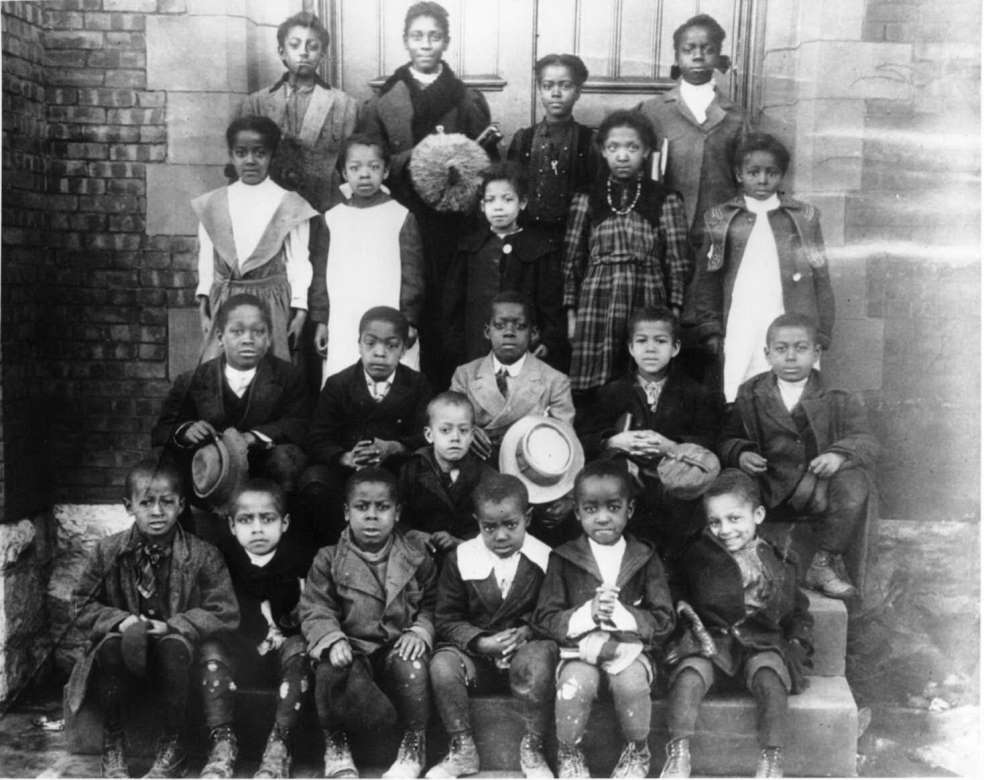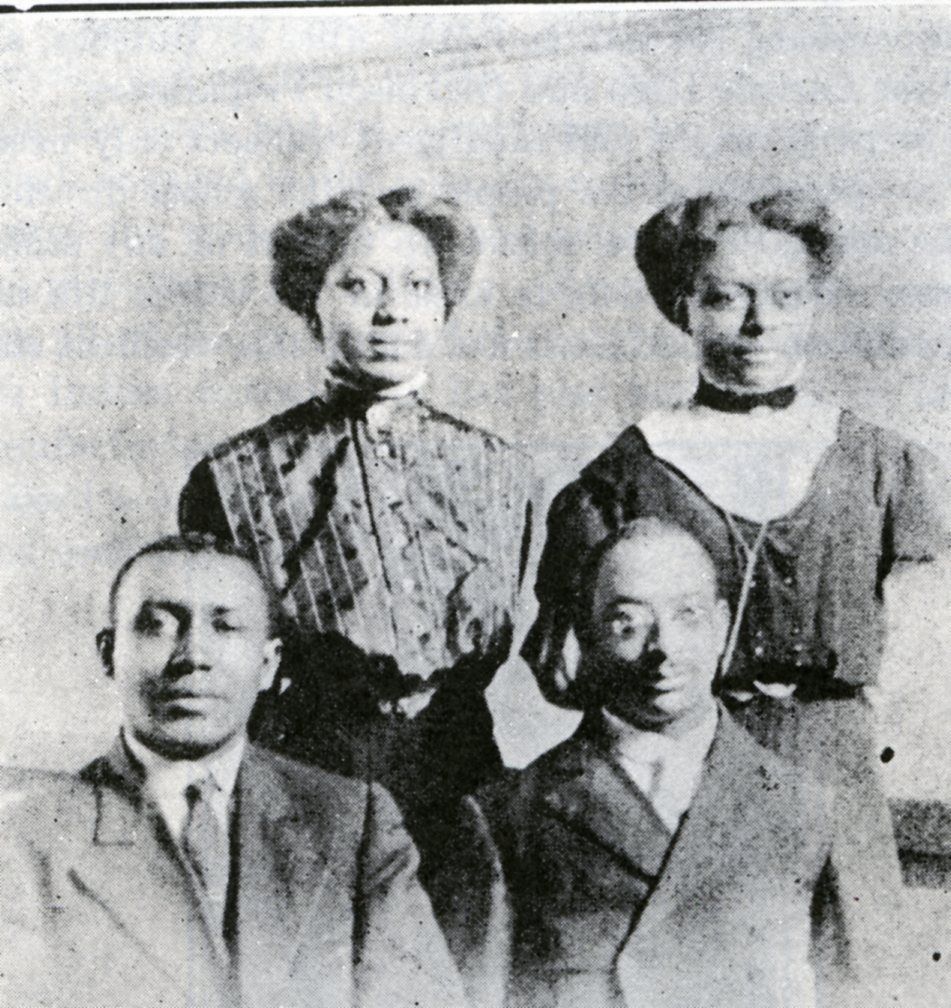1 Annie B. Hantch, “History of the Public Schools of Carlisle”, a paper read before the Hamilton Library Historical Association, February 19, 1909.
2 “A Saint in the Making”, Central PA Magazine, May, 2000.
3 Obituaries in The Evening Sentinel, Carlisle, PA: John J. Butcher, March 13, 1919, Charlotte Butcher, September 8, 1941 and Alice Butcher, October 2, 1963.
4 Professor Charles E. Johnson was the principal of the black school in Carlisle. He was a graduate of Shippensburg High School and the Cumberland Valley Normal School. In 1910, he had had two years of practical work and was giving splendid satisfaction.
James G. Young was a native of Carlisle and a graduate of the Carlisle High School and the Shippensburg Normal School; he was teaching in Carlisle in 1910. In 1905, he was the first African American to play football at Cumberland Valley Normal School (Shippensburg University).
Clara M. Johnson was a graduate of the Shippensburg Normal School and a teacher in Carlisle in 1910.
Alice B. Butcher was a graduate of Carlisle High School and Dickinson Preparatory School and taught in Carlisle in 1910.
5 Additional Resources used in the talk "From Slavery to Integration" a presentation by Sandy Mader avaliable to watch at: https://www.youtube.com/watch?v=m8f57iFSei4
Alosi, John, “Slavery in Post-Revolutionary Cumberland County, 1780-1810”, A Thesis Submitted to the Shippensburg University History Department, 1994.
Bell, Janet, “Corporal Jesse G. Thompson G.A.R. Post 440” Cumberland County History, Volume Thirty, 2013.
Bell, Janet, Lincoln Cemetery: The Story Down Under 1884-1905.
Bland, John P., “Select Brotherhoods: The Shippensburg Black and White Freemasons, 1858-1919”, Cumberland County History, 21:2 (Winter, 2004).
Burg, Steven B., “Shippensburg's Locust Grove Cemetery: A Window on Two Centuries of Cumberland County's African-American History”, Cumberland County History, Volume Twenty-six, 2009.
Burg, Steven B., editor, Black History of Shippensburg, Pennsylvania: 1860-1936, Shippensburg University Press, 2005.
Cress, Joseph, “Bridging communities”, The Sentinel, Carlisle, PA, February 24, 2014.
Dahlen, Richard L., “Harrisburg's Civil War Patriot and Union: Its Conciliatory Viewpoint Collapses”, Cumberland County History, 15:2 (Winter, 1998).
Garrett, Peggy, “Forty-three Baltimore Street”, Cumberland County History, 13:2 (Winter, 1996).
Garrett, Margaret D., “The Public and Private in Writing History”, Cumberland County History, 16:2 (Winter, 1999).
Hantch, Annie B., “History of the Public Schools of Carlisle”, a paper read before the Hamilton Library Historical Association, February 19, 1909.
Hodge, Ruth, “Guide to African American Resources at the Pennsylvania State Archives”, 2000.
Houpt-Varner, Lindsay, “Cumberland County Slave Cases”, Cumberland County History, Volume Twenty-seven, 2010.
Huffman, Peggy, “Slaves and Slaveholders in Cumberland County: A Study of Original Documents at CCHS, 2006.
Jirard, Stephanie, “U.S. Colored Troops from Cumberland County Buried in Union Cemetery, Carlisle, Pennsylvania, Cumberland County History, Volume Twenty-eight, 2011.
Meehan, Susan, “An Introduction of Thompson-McGowan Collection”, Cumberland County History, 21:2 (Winter, 2004).
Miller, Dan, “Blacks have long local history”, The Sentinel, Carlisle, PA, March 19, 2001.
Pennsylvania Negro Business Directory, Jas. H. W. Howard & Son, Publishers, Harrisburg, PA., 1910.
Rhoads, Elizabeth, “The Odd Fellows in Carlisle”, Cumberland County History, 12:1&2 (Summer/Winter, 2005).
Slotten, Martha C., “The McClintock Slave Riot of 1847”, Cumberland County History, 17:1, (Summer, 2000).
Slotten, Martha, From St. James Square to Tannery Row (Friends of the Bosler Free Library, 1982).
Smith, David L., “Frederick Douglass in Carlisle”, Cumberland County History, 12:1&2 (Summer/Winter, 2005).
Strausbaugh, David, “Mary E. Brown vs. Carlisle School Board: A Study of Colored Education in the Carlisle School District”, a paper written for the History Department of Dickinson College, 1985.
Taylor, Janet, African Americans in Perry County 1820-1925, The Perry Historians, 2011.
Trotter, Joe W. and Eric Ledell Smith, editors, African Americans in Pennsylvania: Shifting Historical Perspectives, Penn State University Press, 1997.
Vale, Thomas E., The Public Schools of Carlisle, Pa.: A Century of Progress, Hamilton Library Association, 1935.
Williams, Rachel L. Jones, “Reviving—and Revisiting—the Reputation of Ralph Elwood Brock”, Pennsylvania Heritage, Fall, 2007.



